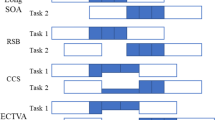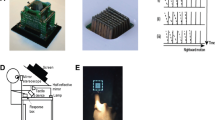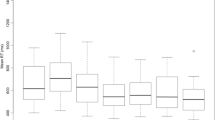Abstract
In a simple reaction time (RT) task, normal observers responded faster to simultaneous visual and tactile stimuli than to single visual or tactile stimuli. RT to simultaneous visual and tactile stimuli was also faster than RT to simultaneous dual visual or tactile stimuli. The advantage for RT to combined visual-tactile stimuli over RT to the other types of stimulation could be accounted for by intersensory neural facilitation rather than by probability summation. The direction of gaze (and presumably of visual attention) to space regions near to or far from the site of tactile stimulation had no effect on tactile RT. However, RT to single or dual tactile stimuli was fastest when observers could see the sites of tactile stimulation on their hands both directly and through a mirror at the same time. All these effects can be ascribed to the convergence of tactile and visual inputs onto neural centers which contain flexible multimodal representations of body parts.
Similar content being viewed by others
Author information
Authors and Affiliations
Corresponding author
Rights and permissions
About this article
Cite this article
Forster, B., Cavina-Pratesi, C., Aglioti, S.M. et al. Redundant target effect and intersensory facilitation from visual-tactile interactions in simple reaction time. Exp Brain Res 143, 480–487 (2002). https://doi.org/10.1007/s00221-002-1017-9
Received:
Accepted:
Published:
Issue Date:
DOI: https://doi.org/10.1007/s00221-002-1017-9




